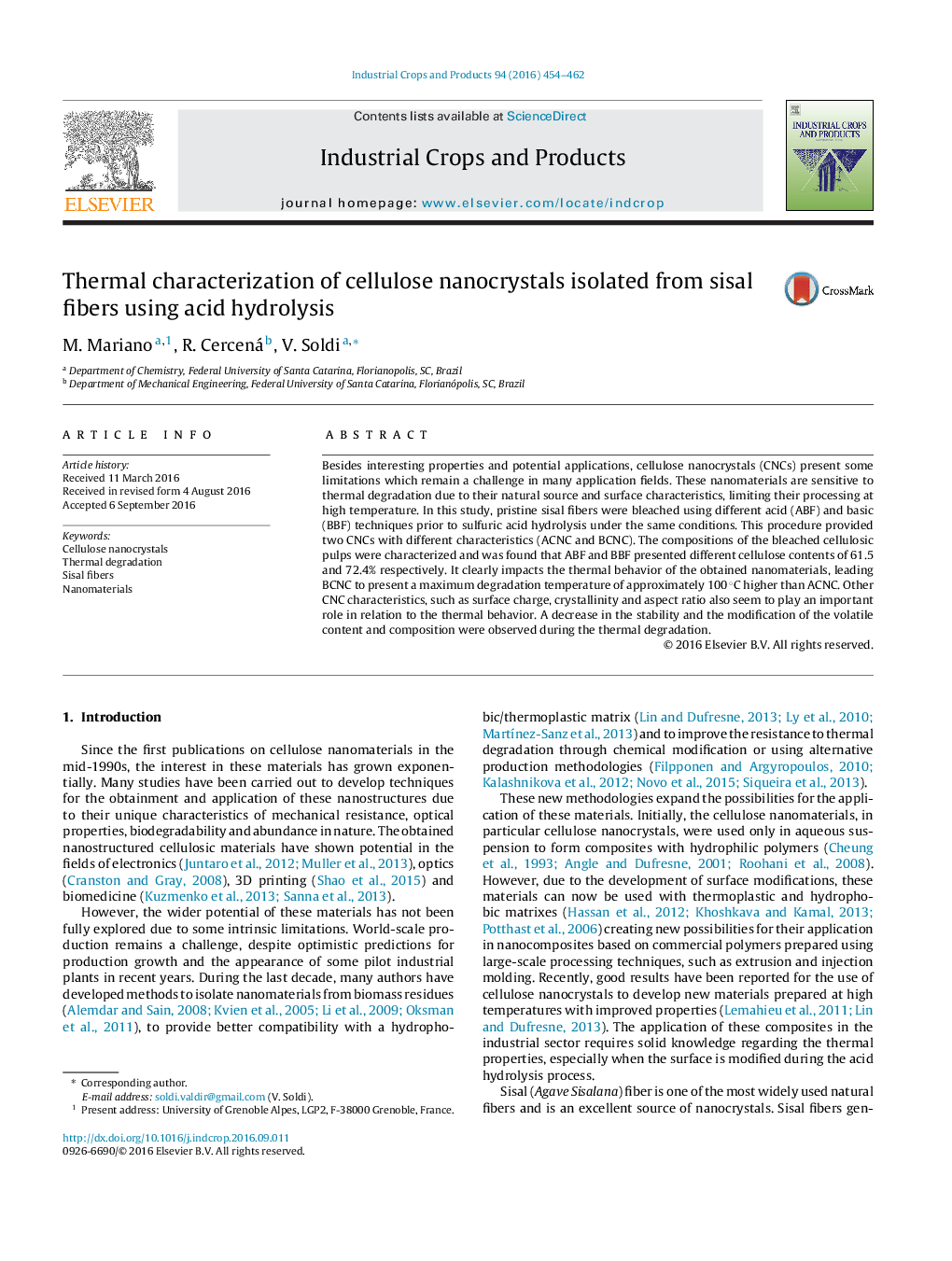| Article ID | Journal | Published Year | Pages | File Type |
|---|---|---|---|---|
| 6375546 | Industrial Crops and Products | 2016 | 9 Pages |
Abstract
Besides interesting properties and potential applications, cellulose nanocrystals (CNCs) present some limitations which remain a challenge in many application fields. These nanomaterials are sensitive to thermal degradation due to their natural source and surface characteristics, limiting their processing at high temperature. In this study, pristine sisal fibers were bleached using different acid (ABF) and basic (BBF) techniques prior to sulfuric acid hydrolysis under the same conditions. This procedure provided two CNCs with different characteristics (ACNC and BCNC). The compositions of the bleached cellulosic pulps were characterized and was found that ABF and BBF presented different cellulose contents of 61.5 and 72.4% respectively. It clearly impacts the thermal behavior of the obtained nanomaterials, leading BCNC to present a maximum degradation temperature of approximately 100 °C higher than ACNC. Other CNC characteristics, such as surface charge, crystallinity and aspect ratio also seem to play an important role in relation to the thermal behavior. A decrease in the stability and the modification of the volatile content and composition were observed during the thermal degradation.
Related Topics
Life Sciences
Agricultural and Biological Sciences
Agronomy and Crop Science
Authors
M. Mariano, R. Cercená, V. Soldi,
